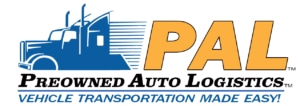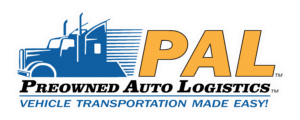How Much Does It Cost to Ship a Car? Pricing Breakdown & Tips
How Much Does It Cost to Ship a Car? Pricing Breakdown & Tips
Have you ever wondered why shipping a car across the country can cost as much as a short vacation? Car shipping isn’t a one-size-fits-all service, and prices can vary dramatically based on multiple factors.
According to data, the average cost to ship a car in 2025 ranges from $550 to $2,450, depending on distance, vehicle type, and shipping method. By understanding these variables, you can make better decisions about when and how to ship your vehicle while potentially saving hundreds of dollars in the process.
This comprehensive guide will break down everything you need to know about auto transport costs, helping you navigate pricing complexities and avoid unexpected expenses.
Average Cost of Car Shipping
Understanding car shipping costs is essential for proper budgeting and planning. As of early 2025, the national average cost to ship a car is $1,245, again prices vary significantly based on distance and transport method.
Distance-based pricing breakdown
Short Distance (under 500 miles)
· Average cost range: $550-$800
· Typical per-mile rate: $1.40-$2.00
· Example: Chicago to Detroit, Miami to Atlanta
Medium distance (500-1,500 miles)
· Average cost range: $800-$1,200
· Typical per-mile rate: $0.85-$1.20
· Example: New York to Miami, Los Angeles to Denver
Long distance (1,500+ miles)
· Average cost range: $1,200-$1,800
· Typical per-mile rate: $0.60-$0.85
· Example: New York to Los Angeles, Seattle to Miami
Differences in open vs. enclosed transport pricing
Open transport
- The budget-friendly choice (what most people use)
- Your car travels on an open trailer with other vehicles
- Costs about $600-$1,650 on average
- Example: Shipping a Toyota Camry from New York to Florida might cost $900 with open transport
Enclosed transport
· The premium, protected choice
· Your car travels in a fully covered trailer
· Costs 40-60% more than open transport
Example: That same Toyota Camry from New York to Florida might cost $1,350 with enclosed transport
When to choose each option:
Choose open transport if:
· You’re shipping a daily driver like a Honda, Toyota, or Ford
· You want to save money
· Your car regularly faces outdoor conditions
Choose enclosed transport if:
· You’re shipping a luxury car (like a Ferrari or Lamborghini)
· You have a classic or antique vehicle
· Your car has custom paint or modifications
· You want maximum protection from weather and road debris

Factors That Influence Car Shipping Costs
Distance and location
The distance between pickup and delivery locations is the biggest price factor, but it works in an interesting way. Think of it like buying in bulk, the more miles you need, the less you pay per mile.
For example:
· Shipping a car 300 miles (Boston to Philadelphia): About $1.95 per mile ($585 total)
· Shipping a car 2,800 miles (New York to Los Angeles): About $0.60 per mile ($1,680 total)
Vehicle size and type
Just like airline baggage fees, bigger and heavier vehicles cost more to ship. According to recent transport data, here’s what you can expect:
· Regular Car (Honda Civic, Toyota Corolla): Base rate
· SUV or Pickup (Ford Explorer, Chevy Silverado): 15-25% more than base rate
· Large SUV or Truck (Ford F-350, Chevrolet Suburban): 25-40% more than base rate
Transport type choice
Think of this like choosing between coach and first class:
- Open transport (like coach)
· Your car ships on an open trailer with other vehicles
· Most affordable option
· What 90% of people choose for regular cars
- Enclosed transport (like first class)
· Your car gets a private, covered trailer
· Costs 40-60% more
· Best for luxury or classic cars
Seasonal timing
Car shipping prices change with the seasons, just like airline tickets:
· Summer (June-August): Peak prices due to high demand
· Winter to Spring (January-March): Lower rates in most areas
· Snowbird Season (October-December): Higher rates for north-to-south routes
· Holiday Periods: Expect 10-20% price increases
Delivery speed
Like choosing between standard and express shipping for a package:
· Standard Delivery (7-10 days): Best rates
· Expedited Service (3-5 days): 30-40% price increase
· Guaranteed Pickup Dates: Additional 25-35% cost
Pickup and drop-off location
Location accessibility affects pricing significantly:
- Major Cities (like Chicago, LA, NYC):
· Lower rates due to high volume
· More carriers available
· Better route options
- Rural Areas:
· Higher rates (often 25-40% more)
· Fewer carriers available
· Additional “last mile” fees may apply
Example: Shipping a car from Manhattan to Miami might cost $1,000, while shipping from a small town in upstate New York to a rural area near Miami might cost $1,400 for the same distance.
Additional Fees and Hidden Costs in Car Shipping
Insurance coverage
When shipping your car, insurance isn’t just an option, it’s a crucial protection for your vehicle. Every legitimate auto transport company provides basic carrier insurance, which often covers up to $50,000-$100,000 in damage and comes included in your base quote. However, if you’re shipping a high-value vehicle worth more than $50,000, you might want to consider additional coverage. This supplemental insurance fills any gaps in the standard coverage and usually costs between 1-2% of your vehicle’s value. Before accepting the basic insurance, carefully review the coverage limits and consider your vehicle’s worth to make an informed decision about additional protection.
Fuel and road charges
Transport companies often add fuel surcharges to adjust for fluctuating gas prices, ranging from 5-15% of your base rate. These charges help carriers maintain their service quality despite varying fuel costs across different regions. Beyond fuel, you might encounter various road-related fees during your vehicle’s journey. These can include highway tolls, urban access fees for busy city centers, and terminal fees if your car needs temporary storage. While some companies include these costs in their initial quote, others add them separately. Always ask your carrier specifically about these charges to avoid surprises on your final bill.
Special handling fees
Special handling fees come into play when your vehicle requires extra attention or equipment during transport. Non-running vehicles present the most common special handling situation, requiring additional equipment and labor for loading and unloading. This typically adds $100-300 to your total cost, depending on the specific requirements. Similarly, vehicles with modifications or unusual dimensions might need special accommodation. Low-clearance vehicles often require a lift gate, adding $100-200 to the price, while oversized vehicles might increase the total cost by 25-50%. These fees reflect the extra time, equipment, and effort needed to safely transport vehicles that don’t fit standard shipping parameters.
How to Get the Best Price for Car Shipping
Securing the best rate for auto transport requires strategic planning and careful research. According to a recent study, taking a systematic approach to booking your car shipment is a cost-efficient way of choosing a reliable service.
Research and compare quotes
Start by obtaining quotes from at least three to five reputable auto transport companies. Each company uses different pricing algorithms and routes, which can lead to significant price variations for the same service. When comparing quotes, ensure you’re looking at similar services and that all potential fees are included in the written estimate. Remember that the lowest quote isn’t always the best value—focus on finding a balance between cost and service quality.
Timing your shipment
Strategic timing can substantially reduce your shipping costs. The auto transport industry experiences seasonal fluctuations, with summer months and January typically seeing the highest rates. Planning your shipment during off-peak seasons (late fall or early spring) can result in savings of 10-20%. Additionally, maintaining flexibility with your pickup and delivery dates allows carriers to optimize their routes, often leading to better rates for customers who can work within a broader time window.
Choose the right transport method
For most standard vehicles, open transport provides a cost-effective solution. While enclosed transport offers additional protection, it typically costs 40-60% more and is only necessary for high-value, classic, or luxury vehicles. Consider your car’s value and intended use when selecting your transport method—the extra cost of enclosed transport might be unnecessary for everyday vehicles.
Location strategy
If possible, arrange pickup and delivery locations near major cities or transport hubs. Rural locations often incur additional fees due to the extra time and fuel required for carriers to deviate from main routes. Consider meeting your carrier at a more accessible location to reduce costs. Some customers save up to 15% by selecting terminal-to-terminal service instead of door-to-door delivery.
Verify credentials and avoid scams
Avoiding hidden fees and scams starts with proper verification. Work only with companies that have a valid USDOT number and adequate insurance coverage. Request a detailed, written contract that outlines all costs, and be wary of carriers requiring large deposits or those with prices significantly below market averages. A legitimate company will be transparent about their pricing structure and willing to explain any additional fees upfront.

How to Get a Car Shipping Quote
Understanding the quote process for car shipping requires attention to detail and proper preparation. Modern car shipping cost calculators use sophisticated algorithms to generate accurate pricing based on multiple variables, ensuring you receive a quote that reflects your specific needs.
The quote generation process
Auto transport companies utilize real-time data analytics to calculate shipping costs. These sophisticated systems consider current fuel prices, carrier availability, route optimization, and seasonal demand fluctuations. When you input your information, the calculator cross-references these factors with historical pricing data to generate a precise quote for your specific situation.
Essential information for accurate quotes
To receive the most accurate car shipping quote, you must provide several crucial pieces of information:
First, specify your pickup and delivery locations with precise addresses or zip codes. The system will analyze the route’s distance, accessibility, and potential challenges such as urban congestion or rural access.
Next, provide detailed vehicle information, including:
· Make, model, and year
· Vehicle condition (operating or non-operating)
· Any modifications affecting size or weight
· Special handling requirements
Then, select your preferred transport method (open or enclosed) and indicate your desired timeframe. Remember that flexibility in scheduling often leads to more favorable pricing.
Understanding quote variables
Your initial quote may fluctuate based on several factors. Transport companies typically guarantee quotes for a specific period, usually 7-14 days. Market conditions, including fuel prices and carrier availability, may affect the final price. Therefore, requesting quotes when you’re ready to proceed with shipping, rather than weeks in advance, ensures the most accurate pricing.
Quote verification process
After receiving your initial quote, reputable companies will review the details and confirm the price. This verification process ensures that all specifications are accurate and that no critical factors have been overlooked. Always request written confirmation of your quote, including a detailed breakdown of all fees and services included.
Conclusion
Shipping a car represents a significant investment requiring careful consideration of multiple factors. Throughout this guide, we’ve explored how distance, vehicle type, transport method, and timing can impact your shipping costs. Current market data shows that while average shipping costs range from $550 to $2,450, understanding these variables helps you make cost-effective decisions.
To maximize your savings, remember these essential strategies:
· Compare multiple quotes
· Maintain scheduling flexibility
· Choose appropriate transport methods
· And avoid peak seasons when possible
Additionally, always verify your carrier’s credentials and ensure all fees are clearly documented before proceeding. While this guide provides comprehensive information about car shipping costs, individual circumstances vary significantly. To receive an accurate quote tailored to your specific situation, we encourage you to use an online calculator or contact reputable auto transport companies directly. These resources will provide current, personalized pricing based on your exact requirements and help you begin your car shipping journey with confidence.




